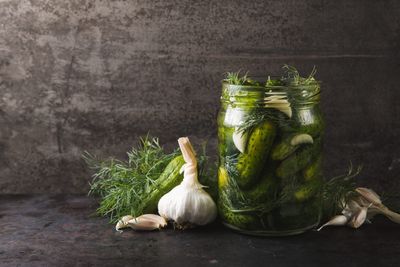What Spices and Herbs are in Pickles?
Purchased pickling spices may have a virtual laundry list of ingredients. Some contain the following herbs and spices for pickling:
Allspice Mustard seed Coriander seed Black peppercorns Ginger root Cinnamon Bay leaf Cloves Crushed peppers Dill Mace Cardamom Nutmeg
Pickle preferences are kind of personal. It all depends on which flavors you prefer, so if you’re up to growing herbs for pickling, pick the ones that suit your palate.
Growing Herbs for Pickling
Spices for pickles (such as black peppercorn, allspice, cinnamon, cloves, mace, and nutmeg) generally hail from tropical environments, making it less likely that most of us can grow them. Herbs, on the other hand, are fairly hardy and can be easily grown in many regions. One caveat to growing your own spices would be with coriander and mustard seed. Coriander seed, after all, is simply the seeds from cilantro. To grow cilantro, sow the seeds in a sunny area in loam or sandy soils. Space the seed 8-10 inches (20.5 to 25.5 cm.) apart in rows that are 15 inches (38 cm.) apart. Seed formation is dependent upon weather conditions. In hot climates, cilantro bolts and quickly forms seed. There are some varieties of cilantro that are slower to bolt and, thus, better suited for growing for the tender leaves. Mustard seed actually comes from the same plant as mustard greens (Brassica juncea), which is usually cultivated for its leaves and eaten as a vegetable. To grow mustard seeds, plant mustard 3 weeks before your last frost-free date. Once the plants begin to grow, they require little care. Mustard does bolt quickly with warmer temps, which in the case of mustard seed cultivation may seem like a great thing. Actually, though, mustard that bolts rapidly does not set flowers, hence no seeds. Dill seed is an absolute must in many pickle recipes and the wonderful thing about dill is that it is grown for both its tender leaves and its seeds. Dill should be propagated via seed. Plant dill seed after the last frost in your area and lightly cover the seed with soil. Water the seeds well. When the plant has flowered, it will develop seed pods. When the pods turn brown, cut the entire flower head off and put it in a paper sack. Shake the bag to separate the seeds from the flower and pods.
